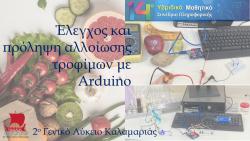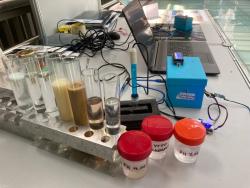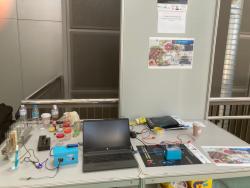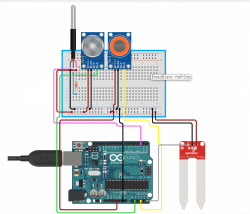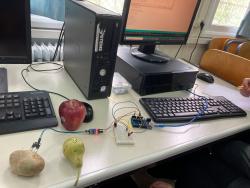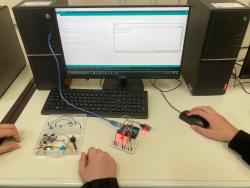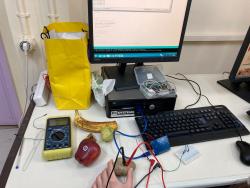Hosted by SALL , contributed by Laertis on 17 April 2022
Deterioration and decomposition of food is a problem that arises due to inefficient practices and conditions of storage and transportaiton over long distances. On the other hand, many foods are wasted or discarded after their expiration date but in some cases they could be consumed. When food is stored, parameters such as nutritional value, conductivity, gases, pH, temperature and humidity often change. These changes help us to monitor their quality. Many foods, when overcooked or spoiled, begin to emit gases such as ethylene and methane, change color, change their humidity, temperature and pH, or even their conductivity. This project proposes a smart system to monitor specific foods using the Arduino microcontroller, in order to detect possible alterations, measuring data using sensors. Measured data are compared to reference values from a laboratory measurements database, the condition of the food is evaluated, and action or warning is suggested.
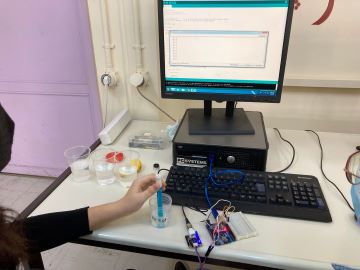
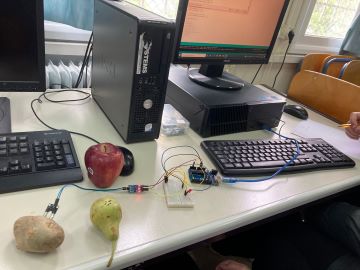
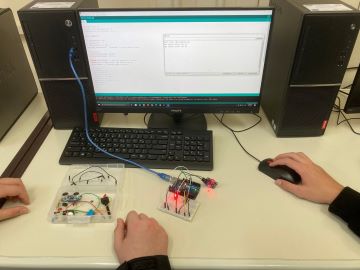
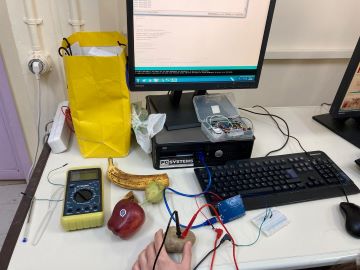
Taust
The 2nd General High School of Kalamaria is located in Karabournaki and has 256 students and 29 teachers. For the last 30 years, our school has been participating in various European Erasmus + programs, educational exchanges and international conferences. Every school year, groups of students participate in various educational programs (environmental, cultural, career education, etc.) and cooperation activities with international and / or local scientific and voluntary bodies (ESA, CERN, WWF, Science Dissemination Center "Noisis", AUTh, etc. ). Last 9 years, a STEM student group has been operating combining subjects like Robotics, Programming and Natural Sciences. We have created several projects based on the STEM methodology and we had many successes and distinctions in Greece and abroad. Among others, we mention
- the distinction of our team from the European Space Agency (ESA) in the European competition Astro Pi 2018,
- our participation in the 84th TIF (Thessaloniki Interanational Fair) during September 2019 at the stand "Innovative Student Constructions" of Noisis science center, with the project "Internet of Things in a Smart City",
- the 1st place and prize in the category" Free Presentation - Gymnasium - Lyceum "of the Aegean Robotics 2021 Competition of the University of the Aegean with the project" Robot Hood - The Robot of the Forests "and
- distinction in the 3rd Greek Open Technologies Competition 2020-2021, in the category "Climate Change" with the improved version of the project "Robot Hood - The Robot of the Forests".
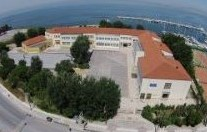
Eesmärk
The proposal through this project is to develop a smart system that can help identify the freshness of food and the quality of food items. Our system is based on electrical sensors that can monitor food spoilage conditions. The goal of the proposed system is to create an electronic circuit with a microcontroller and sensors that can detect food spoilage. Specifically, the device consists of an Arduino Uno microcontroller and sensors measuring pH, humidity, ethylene and methane gases, as well as electrical conductivity. These parameters change when food starts to spoil.
Students use the circuit and the measurements to record data, compare the measurements with reference values, identify and distinguish the quality of food. They also realize the importance of proper food storage and preservation methods and adopt attitudes towards the consumption, packaging and disposal of food.
Koosloome huvigruppidega
The food we eat can be affected by infections that can occur due to poor storage conditions, unsafe packaging or even chemical changes in the food. Food spoilage occurs when a food product becomes inappropriate for human consumption. Various external factors affect this process, such as the type of food, the packaging and the processing that has been submitted before consumption. According to the results of the most recent relevant UN research, Greece records the third worst performance in food waste, as it is estimated that 142 kilos of food per inhabitant end up in the garbage every year! Food waste has to do with the amount of food that ends up in the trash. The main cause in the western world is overconsumption while in the countries of the so-called "Third World" are the conditions of handling and storage. Overall, it is estimated that 17% of world food production is thrown away every year as
rubbish. Food waste also affects the climate crisis, through global warming. Science experts estimate that about 8% -10% of greenhouse gases are due to food that ends up in the trash.
Rakendamine
Our electronic circuit is based on Arduino Uno microcontroller and electrical sensors that can monitor food spoilage conditions by measuring indicators such as pH, humidity, ethylene and methane emissions as well as electrical conductivity. The specific indicators change when a food starts to spoil.
The pH meter detects the number of hydrogen ions formed in a certain volume of waterin in a substance. The pH calibration is a compulsory process before experimental measurements. We tried to verify eference measurements in different liquid solutions, such as lemon in water, coffee, milk, tap water, baking soda in water and detergent in water. The MQ4 sensor detects the emission of ethylene & methane gases. It has been found that when several foods / fruits spoil, they emit ethylene and/or methane gases. The sensors collect the measurements from the environment and produce an analog voltage value proportional to the gas concentration. The higher the gas concentration in the air, the higher the output voltage, while the lower the concentration, the lower the output voltage. The humidity sensor detects the level of humidity in the food. The resistance of the sensor is inversely proportional to the humidity of the food. That is, the more moisture the higher the conductivity (lower resistance), and the less moisture the lower the conductivity (higher resistance).
Refleksioon
The quality and spoilage control of food and the reduction of overconsumption and food waste, consist a major challenges for the scientific community and humanity. The purpose of this project is to build a circuit for the measurement and detection of emitted gases, humidity level, pH and electrical conductivity, as they are key factors at the beginning of deterioration of food. Students apply STEM method and combine knowledge and skills of Physics, Mathematics, Engineering and Informatics to design, construct, experiment and control using the circuit and record the measurements. Finally, by comparing the measurements with the reference values, they recognize the properness of food to be consumed. In addition, students become aware of the importance of food storage and preservation methods and adopt attitudes about eating, packing and disposing of food.
